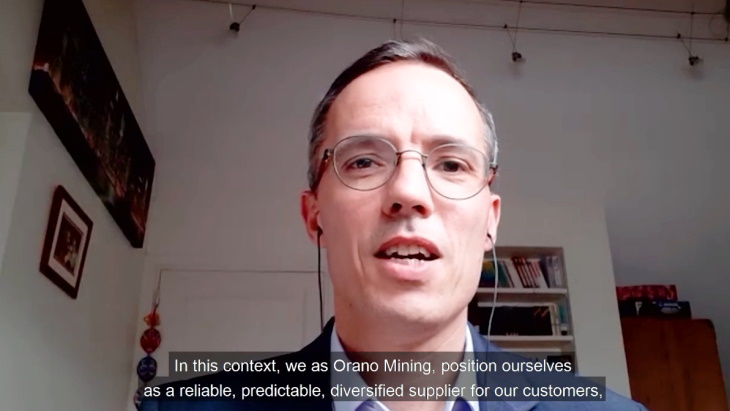The health and safety of employees and communities has remained "at the top of the agenda" for Orano throughout the COVID crisis, Maes said, but the company had at the same time managed to make all of its committed deliveries. All the sites operated by Orano - with the exception of McClean Lake in Canada - as well as its transport, project and services activities - have so far been able to keep operating during the COVID crisis, he added.
"Despite the significance of the COVID crisis, the climate agenda continues. National policies around the world are embracing it. I believe we are getting closer to a situation similar to that in 2000-2010, with a likely disruption in the market in the years to come.
"The reality is that with the predictable increase in demand, the list of projects that will actually be put in operation by the time the currently operating mines come to closure is limited," he said. "We at Orano Mining have positioned ourselves as a reliable, predictable, diversified supplier and a trustworthy partner. This implies three points: delivering on our commitments; investing in the future and acting responsibly."
In the short term, Maes said, Orano is further developing its existing producing assets. For example, at Somaïr in Niger, the combination of performance action, including the focused use of digital solutions, with an investment in a new heap leach pad, will give the mine "a good 10 years' visibility". In Kazakhstan, development of the South Tortkuduk area - where 3D hydrodynamic modelling in wellfields is being used to keep the mine at the forefront of ISL technology - "will bring Katco [a joint venture with Kazatomprom] well into the next decade", he said.
To prepare for the future, Orano is continuing to develop the "most comprehensive portfolio of projects in the industry", he said. Pilot operations are ongoing in Mongolia, while operations in Uzbebkistan - where a second exploration is being complete this year - are "off to a very good start", he said. In Niger, alternative mining methods are under development at Imouraren "that would dramatically reposition this project from a cost perspective", while in Canada, a second field test for our SABRE - Surface Access Borehole Resource Extraction - technology for deposits in the McClean and Midwest areas will be carried out this summer. The company's "significant" exploration budget is currently focused on Canada and Uzbekistan, Maes said.
"We are an operator. Those projects will come to life. They will contribute to deliver reliable, diversified and predictable supply of uranium in the long run," he said.
"There is no sustainable uranium mining without proper, responsible behaviour. This includes the management of the end-of-life of our sites," he said. Production at Cominak in Niger came to an end on 31 March after more than 40 years of operations, and Maes paid tribute to the Cominak team. "The men and women of Cominak have worked until the very last day with dedication," he said.
The post-production transition plan for Cominak has been drawn up with strong involvement of local stakeholders and approved by the government of Niger, and Orano is acting for a transition that is of practical benefit to the local community, Maes said, with one third of the site closure budget dedicated to social and community aspects. Comprehensive remediation works have started immediately. They will last about 10 years and environmental monitoring will follow. "The plan is a clear example of our strategy to act as a responsible mining company including beyond production shutdown," he said.
"Orano is confident about the uranium mining future, and we continue to invest in our projects to meet demand. Long-term contracts with our customers support our strategy, to provide reliable responsible supply," he said.





_18570.jpg)
_16159.jpg)
_49205.jpg)
_18938.jpg)





